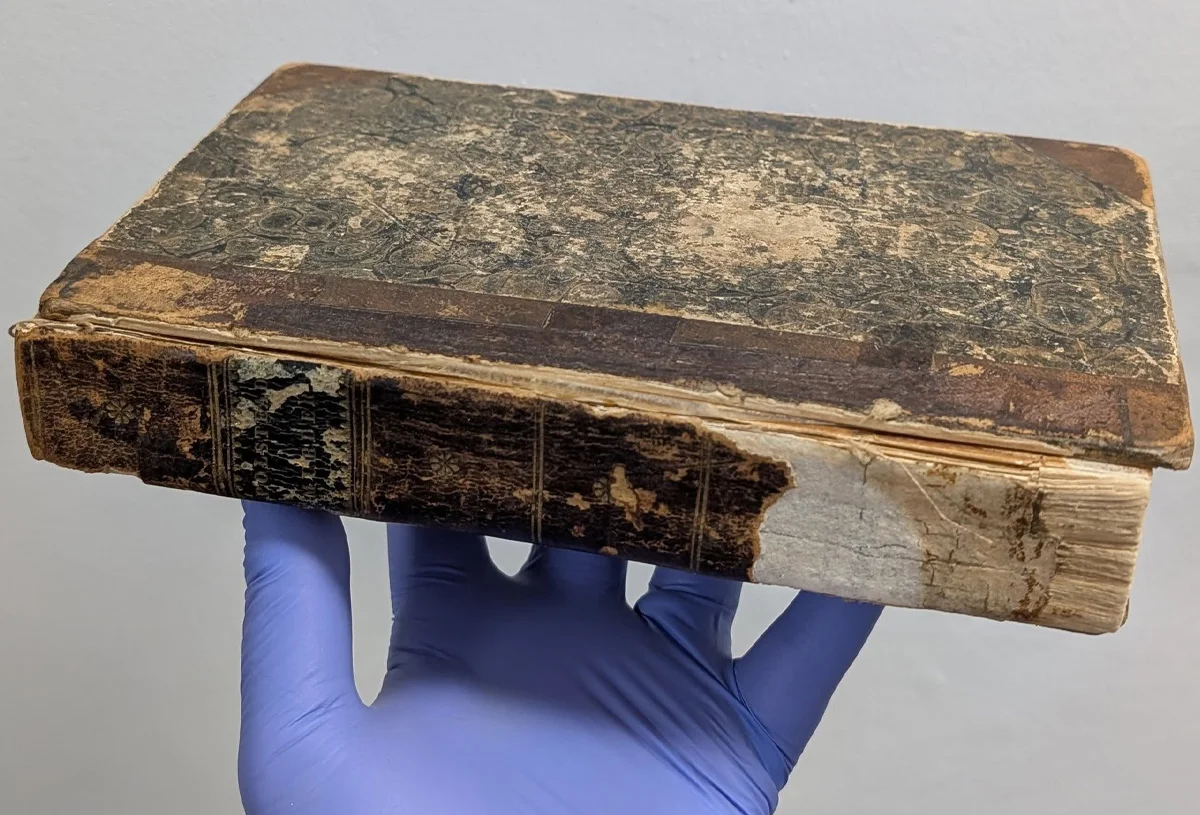A macabre book bound in human skin has been rediscovered at Moyse’s Hall Museum in Bury St Edmunds, Suffolk.
The book is believed to be bound with the skin of one of the UK’s most infamous murderers, William Corder, who was convicted of killing Maria Marten in the Red Barn Murder of 1827.
William Corder, the son of a local farmer, was known for his reputation as a fraudster and a ladies’ man. He began a relationship with Marten, who became pregnant and gave birth to their child, though the infant later died. The couple planned to marry and Corden lured her to the Red Barn in Polstead on the false promise of eloping.
Marten set out to meet him, but this was the last time that she was seen alive. Corder pretended that he and Marten were married to her friends and family, making excuses for her disappearance and eluding that all was well.
After a series of disturbing dreams, Marten’s stepmother became convinced that Maria had been murdered and buried in the Red Barn. Her suspicions proved correct when Maria’s decomposed body was found hidden in one of the barn’s grain bins.
Evidence quickly pointed to Corder, who was arrested and tried in 1828 at Shire Hall, Bury St Edmunds. He was found guilty and publicly hanged before a massive crowd—estimates ranged from 7,000 to as many as 20,000 spectators.
Following a postmortem, Corder’s skin was tanned and used to bind an account of the murder, which is currently on display at Moyse’s Hall Museum in Bury St Edmunds.
In a recent announced by the Moyse’s Hall Museum, a second book has been rediscovered sitting on a shelf in the museum office. The book is also believed to have been bound using Corder’s skin, which had been donated decades ago by a family with ties to the surgeon who anatomised Corder’s body.
The book wasn’t stored in the museum’s official collection, so instead became forgotten sitting on a bookshelf inconspicuously among other books.
Mr Clarke said: “We get things called museum losses, and it tends to be from the last century – things that have not been seen for a couple of decades.
Unlike the first book, which is entirely bound in human skin, the rediscovered book (which is also an account of the murder) uses the skin only on its spine and corners. “Visual comparisons between the leather of the first and second book seem to suggest they are one and the same,” said the Moyse Hall Museum.
Header Image Credit : Moyse Hall Museum
Sources : Moyse Hall Museum





